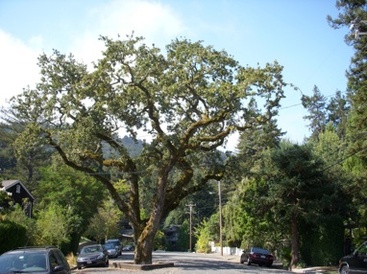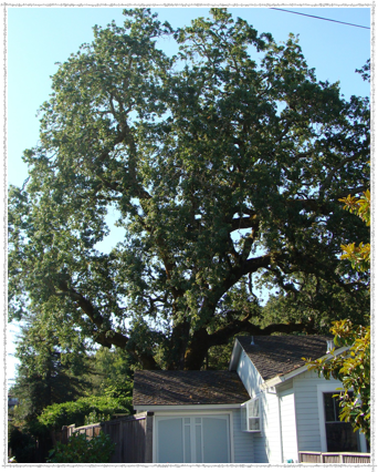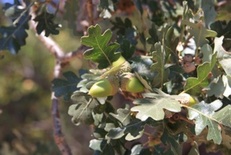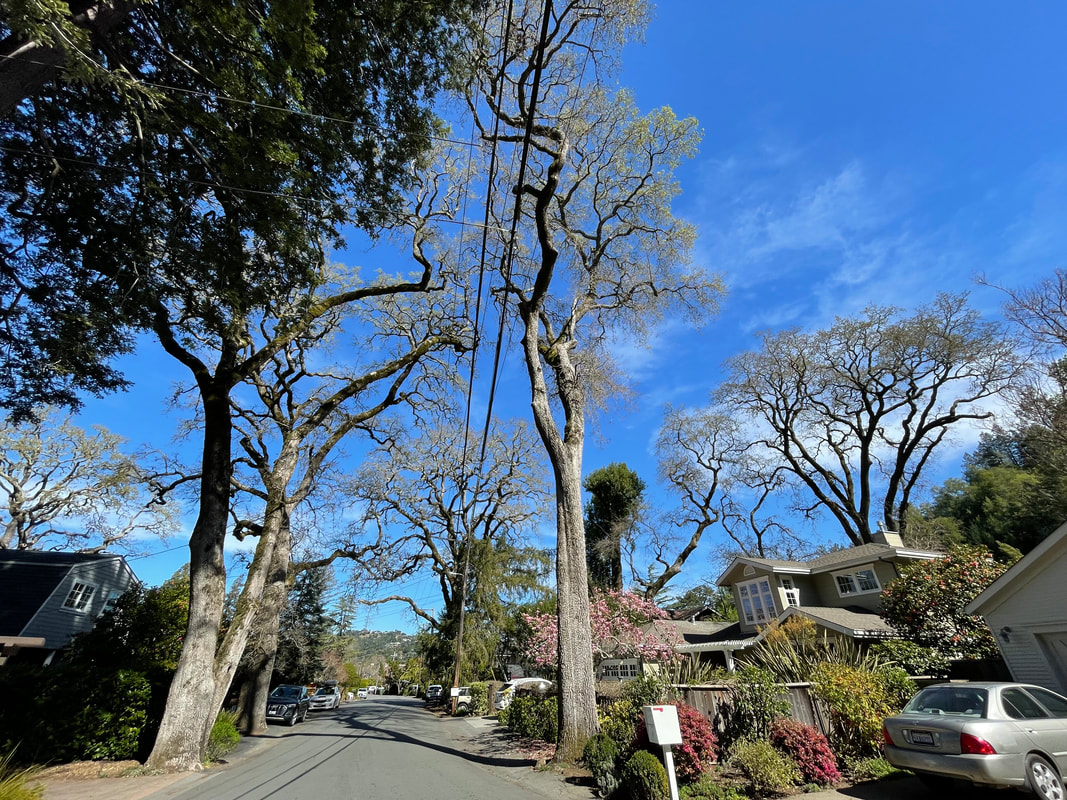The valley oak that guards the entrance of Baltimore Canyon at Magnolia and West Baltimore is reputed to be over 250 years old. For its first hundred or so years of life its growth was undisturbed allowing it to send roots into deep alluvial soil (a creek lies just behind the houses on the north side of the street). In 1850, in response to the growing need for lumber, a sawmill was built on the site and remained there for ten years while the old growth redwood forest in the canyon to the west was harvested. Eventually a neighborhood grew up around the tree. A concrete curb was put in place to protect the trunk in 1918. The road was paved in 1927 and many tons of vehicle traffic pass by daily.
Today the tree is in slow decline; the canopy is thin and epicormic shoots are visible on all the branches. Still, it stands as a testament to the enduring strength and beauty of a California oak.
Valley oak is considered to be the world’s tallest oak species often reaching 90 ft. It is the principle oak of California’s central valley and thrives where it is able to tap into the water table. It’s a beautiful tree, even in winter, when its leafless, moss covered branches glisten in the sun. It is obviously not a species suitable for small spaces.
Today the tree is in slow decline; the canopy is thin and epicormic shoots are visible on all the branches. Still, it stands as a testament to the enduring strength and beauty of a California oak.
Valley oak is considered to be the world’s tallest oak species often reaching 90 ft. It is the principle oak of California’s central valley and thrives where it is able to tap into the water table. It’s a beautiful tree, even in winter, when its leafless, moss covered branches glisten in the sun. It is obviously not a species suitable for small spaces.
The Murray Park neighborhood has many old, large valley oaks. Below are some Murray Park valley oaks in winter




